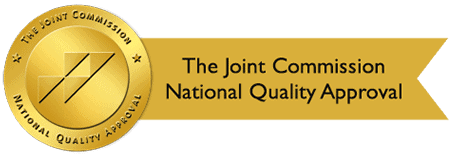By: Design for Change Recovery
Categories:
Pros and Cons of Harm Reduction Programs for Substance Abuse
You are here:The primary goal of harm reduction programs is to keep a person safe if they are abusing drugs. The programs focus on lowering problematic drug use and reducing fatal overdoses.
Of course, the programs mainly serve as a temporary solution until the person can get professional addiction treatment.
Most people won’t achieve complete abstinence while in a harm reduction program. However, some will avoid overdose as a result of the evidence-based strategies practiced in harm reduction centers.
What Does Harm Reduction Mean?
According to the Substance Abuse and Mental Health Services Administration (SAMHSA), harm reduction is:
“Harm reduction is a proactive and evidence-based approach to reduce the negative personal and public health impacts of behavior associated with alcohol and other substance use at both the individual and community levels.”
The programs seek to meet individuals on their own terms while serving as a stepping stone toward treatment and recovery. Given that the CDC reported a record high of 100,000 overdose deaths last year, harm reduction programs may be instrumental in bringing these statistics down.
Why Are Harm Reduction Programs So Controversial?

The programs have also reduced criminal behaviors related to drug use. Yet, some people say the programs are a cop-out that “normalizes” drug use and fails to solve anything. They hold negative views of the program because it does not insist on abstinence as a condition for treatment.
Regardless of whether you believe harm reduction programs are beneficial, we think it’s wise to understand what they seek to accomplish.
Different Types of Harm Reduction Programs
Part of their approach to addressing America’s addiction epidemic includes the following:
- Connect drug users with appropriate services
- Provide opioid overdose reversal medications
- Lessen the risk of infectious diseases
- Reduce fatal overdoses
- Remove the stigma surrounding substance use
- Improve physical health of drug users
- Provide referrals to support programs and treatment
Below are some of the different types of harm reduction strategies in place across the U.S. today.
#1. Needle Exchange Programs
When people share needles for injecting drugs, they are at risk of infectious disease. For this reason, needle exchange programs (NEPs) can reduce the risk. These community-based programs provide free, sterile needles and syringes to drug users. The aim is to prevent disease transmission.
NEPs also provide information about safer methods of injecting drugs, overdose prevention info, screening for STDs, and referrals for HIV testing. They also offer referrals to substance abuse treatment services.
#2. Medication-Assisted Treatment (MAT)
MAT programs involve the use of methadone, buprenorphine, or other maintenance medicines. The medications minimize cravings and withdrawal symptoms and reduce the urge to abuse substances.
These programs are offered in different settings such as clinics, offices, hospitals, prisons, and substance abuse treatment centers.
#3. Naloxone Programs
Naloxone is an opioid overdose reversal drug. When administered right away, it can effectively prevent a fatal outcome. It can be administered as a nasal spray or through injection.
As community-based operations, naloxone programs offer education and training on the signs of overdose, how to administer naloxone, and resources for addiction treatment.
Naloxone programs are a public health service that can save lives, according to the CDC. People who administer naloxone are protected from prosecution by The Good Samaritan Law.
#4. Supervised Injection Sites
Supervised injection sites are staffed with professionals who can administer aid for an overdose. The facility provides drugs, clean needles, and syringes in a hygienic environment. The goal is to help prevent infectious diseases and reduce overdoses.
The first legal supervised injection site began operating in 2021 in New York City. Despite being legal under local and state law, it is illegal under federal law. However, more than 120 centers operate legally in ten other countries.
#5. Moderation Management
Moderation management programs take a different approach from the traditional 12-Step programs. Rather than insisting on complete abstinence, MMs allow moderate drinking. The goal of this program is to help people learn to cope with triggers, set realistic goals or limits, and keep their drinking from getting out of control.
This type of program is not for everyone. Only about one-third of participants proceed to an abstinence-based program as their next step in controlling their alcohol consumption.
Disadvantages of Harm Reduction Programs
About one-half of people with SUDs also have a co-occurring mental health disorder. Harm reduction techniques don’t treat these issues.
Only a professional addiction treatment program has the expertise and integrated treatment approach to fully address co-occurring disorders.
Without proper treatment in an evidence-based treatment program, full recovery is unlikely.
Effective, Evidence-Based Treatment at Design for Change Recovery
Harm reduction programs may help a person moderate their drug use and reduce negative consequences. But, addiction is a complex disorder that requires specialized treatment in a professional facility.
At Design for Change Recovery, we offer a unique, comprehensive program that is designed to address the mental, physical, and emotional aspects of addiction. We heal the whole person, not just the addiction.
If you are struggling with substance abuse or addiction, contact Design for Change Recovery in Lancaster, CA to learn more about how we can help.
Sources:
- samhsa.gov/ – Harm Reduction
- cdc.gov/ – Vital Statistics Rapid Release: Provisional Drug Overdose Death Counts
- ncsl.org/ – Drug Overdose Immunity and Good Samaritan Laws
- en.wikipedia.org/. – Supervised Injection Site


